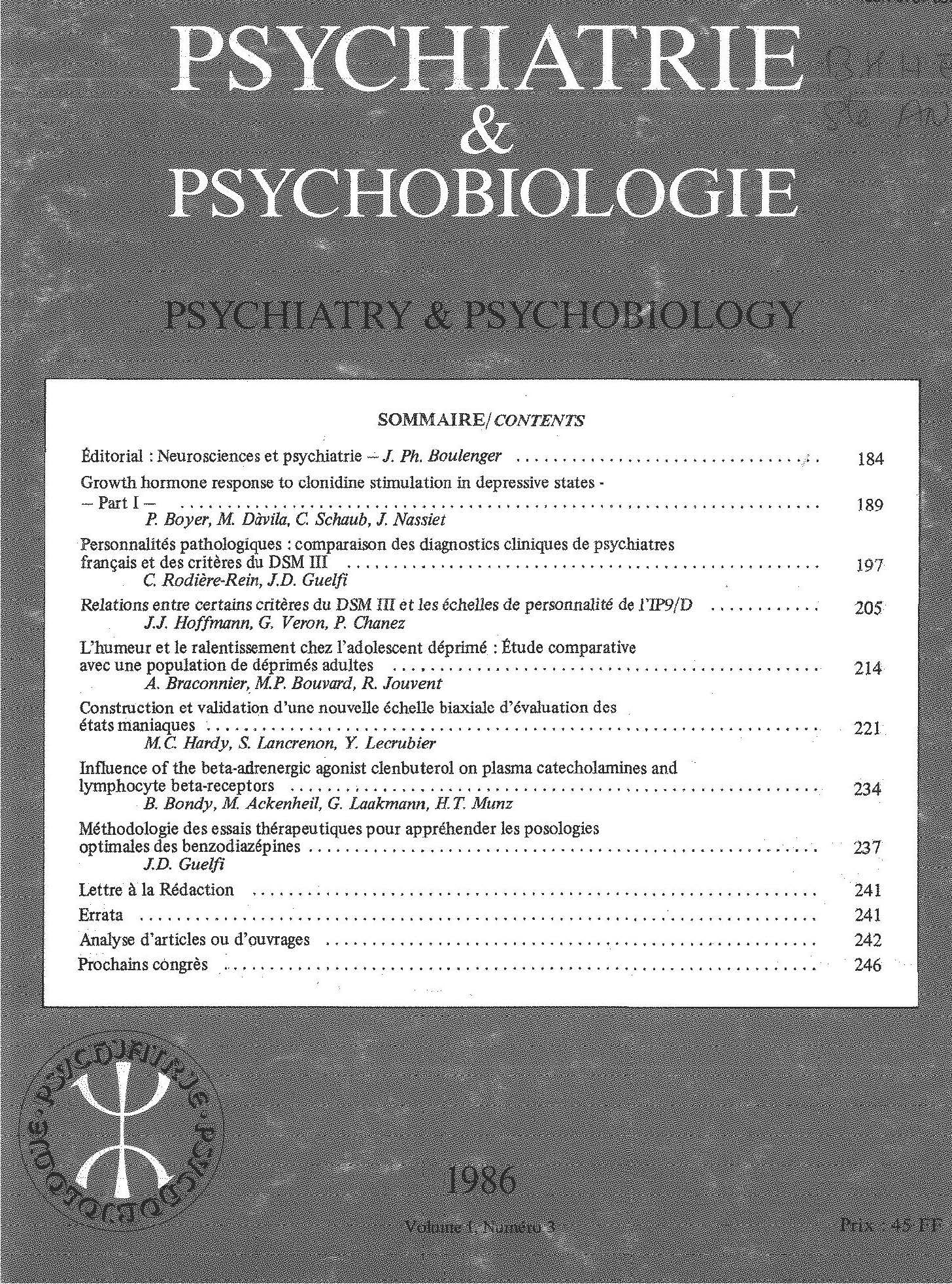Article contents
Epidémiologie de l'anxiété dans la population générale française
Published online by Cambridge University Press: 28 April 2020
Résumé
Mille trois sujets, constituant un échantillon absolument représentatif de la population générale française en ce qui concerne le sexe, l'âge, le niveau socio-économique et le lieu de résidence, ont été examinés avec 3 inventaires d'auto-estimation mesurant le niveau d'anxiété éprouvée (questionnaire HSCL, items d'anxiété), l'inhibition anxieuse éprouvée (WP2) et la symptomatologie dépressive ressentie (QD2A). Une analyse factorielle a confirmé que la HSCL et la WP2 mesurent la même dimension générale d'anxiété alors que le QD2A mesure une dimension indépendante de dépression. Les résultats moyens à la HSCL et à la WP2 sont significativement plus élevés pour les femmes que pour les hommes. Les résultats de 2 sous-échantillons, de chacun 152 sujets, appariés avec précision en ce qui concerne l' âge et le sexe, mais différant par le niveau socio-économique, ont montré l'existence de niveaux d'anxiété plus élevés dans le sous-groupe de niveau socio-économique plus bas, la différence étant significative pour la HSCL. Dans l'échantillon total, une analyse de variance n'a mis en évidence aucun effet de l'âge sur les notes moyennes à la HSCL, mais un effet sur les notes à la WP2, lié au fait que les sujets de 65 ans et plus ont des notes plus élevées. Comme le niveau d'anxiété tend à être élevé chez les sujets présentant une symptomatologie dépressive, il a été décidé d'éliminer ceux dont la note au QD2A était de 7 ou plus, des études antérieures ayant montré que le seuil 6/7 fournit la discrimination optimale entre sujets déprimés et sujets non déprimés. Le pourcentage de sujets «déprimés» éliminés est significativement plus élevé dans les groupes d'âge plus avancé. Dans le sous-échantillon restant de sujets «non déprimés», il n'existe aucune relation entre l'anxiété et l'âge, tant pour la HSCL que pour le WP2.
Summary
One thousand and three subjects, constituting an accurately representative sample of the French population aged 18 and over as regards sex, age, socio-economic level and place of residence answered 3 self-rating questionnaires measuring the level of experienced anxiety (HSCL Anxiety Factor subscale), experienced anxious inhibition (WP2) and experienced depressive symptomatology (QD2A). A factorial analysis confirmed that both HSCL and WP2 measure the same dimension of anxiety whereas QD2A measures an independent dimension of depression. Mean scores for both HSCL and WPE are significantly higher in women than in men. The results of 2 sub-samples of 152 subjects, accurately matched for age and sex, and differing in socio-economic level, displayed the existence of higher levels of anxiety in the lower socio-economic sub-sample, the difference reaching a significant level for HSCL. In the total sample, an analysis of variance showed that age had no effect on mean HSCL scores, but did have an effect on WP2 scores due to the higher levels in the subjects aged 65 and over. Since the level of anxiety tends to be high in subjects with a depressive symptomatology, it was decided to eliminate those with a QD2A score of 7 and more, previous studies having shown that the cut-off score 6/7 gives the best discrimination between clinically depressed and non-depressed subjects. The percentage of eliminated «depressed» subjects was significantly higher in the older age groups. In the remaining sub-sample of non-depressed subjects, no relation between anxiety and age existed for either HSCL or WP2.
Keywords
- Type
- Article original
- Information
- Copyright
- Copyright © European Psychiatric Association 1989
References
Références
- 10
- Cited by



Comments
No Comments have been published for this article.